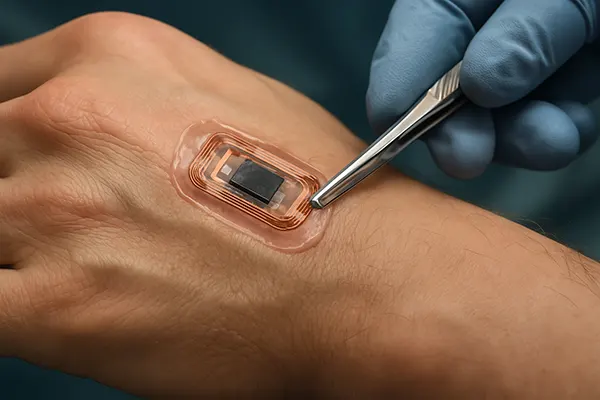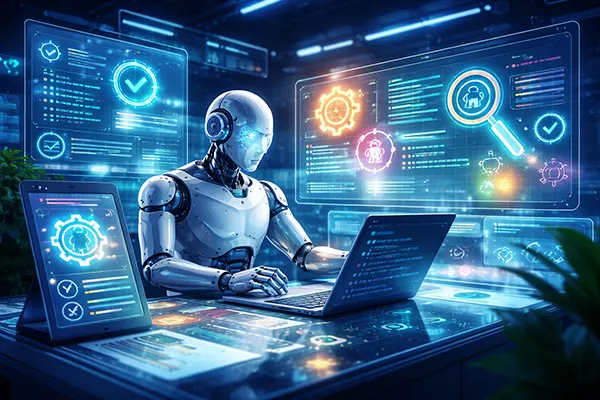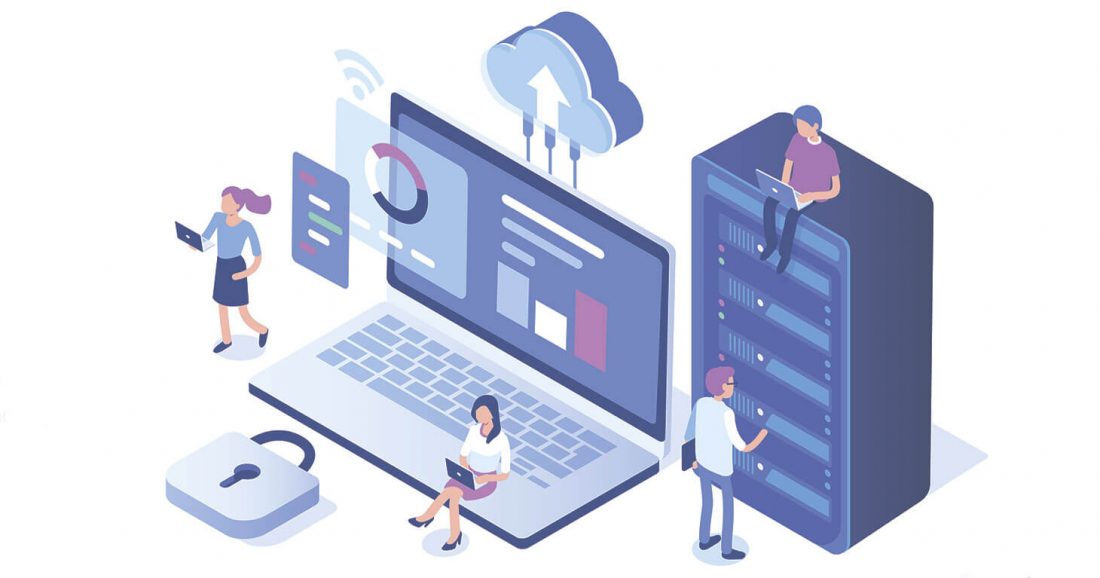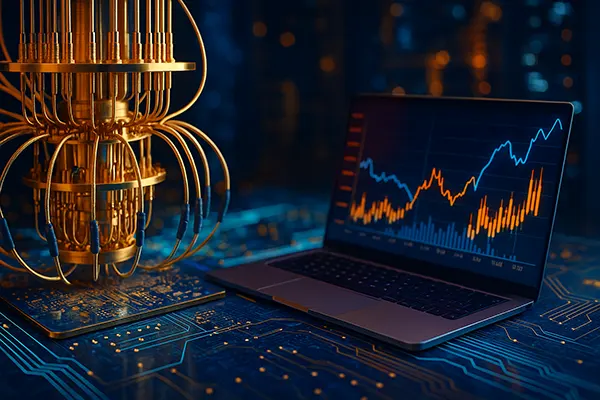
Biochips in the Human Body: A New Era of Integration Between Technology and Biology
Technological progress in the 21st century has led to revolutionary innovations that blur the boundaries between machines and humans. One of the most advanced developments in this field is the introduction of biochips – microscopic devices designed to interact directly with the human body. These innovations not only open new doors in medicine and science but also raise ethical and philosophical questions about the future of human augmentation.
Medical Applications of Biochips in 2025
As of February 2025, biochips are widely used in healthcare, especially for patient monitoring and diagnostics. These microdevices can be implanted under the skin and provide real-time information on vital signs such as glucose levels, heart rate, and body temperature. This continuous data flow enables doctors to detect and respond to abnormalities faster than ever before.
Biochips have become particularly valuable in managing chronic diseases. For example, diabetic patients benefit from implanted chips that monitor blood sugar and automatically trigger insulin release systems. This technology reduces the risk of hypoglycaemia and allows patients to live more independently without frequent manual interventions.
Moreover, biochips are now used in complex surgical operations and postoperative monitoring. In some cases, they are programmed to release medication gradually, reducing inflammation or preventing infections without relying on manual dosing. The ability to personalise treatment using data-driven biochip algorithms is changing the foundations of personalised medicine.
Innovative Implants for Emergency and Remote Healthcare
One of the most promising uses of biochips in 2025 is in emergency care and remote medical support. Military and remote expedition teams use subdermal biochips to send immediate alerts about trauma or severe conditions directly to medics or hospitals. These alerts include location data and real-time diagnostics, which can be vital in life-threatening situations.
For remote regions with limited healthcare access, biochips can connect patients to digital health systems, offering diagnostics and preliminary treatment recommendations. Through satellite communications, the data collected from biochips are analysed by AI to provide immediate feedback and prioritise care where needed.
In natural disaster zones, rescue operations also utilise biochip technology to detect signs of life in collapsed buildings or beneath rubble. This application goes beyond human biology and represents the convergence of search-and-rescue infrastructure with medical nanotechnology.
Security and Identification Use Cases
In addition to healthcare, biochips are increasingly used for identification and access control in 2025. Corporations and governments in several countries, including Sweden and the Netherlands, have implemented optional implant-based ID systems that allow citizens and employees to unlock doors, log into devices, and make cashless payments using a single gesture.
The use of Near Field Communication (NFC) within biochips makes these systems efficient and secure. Unlike smartphones or cards, biochips are difficult to steal or lose, which significantly enhances protection against unauthorised access and fraud. Users can also link their medical records or emergency contacts to their ID chips for added security in public spaces.
Despite the growing popularity of such applications, debates around personal privacy and surveillance remain a concern. Although the chips are typically encrypted and require user consent, sceptics worry about potential abuse by governments or corporations, especially if chip data are misused or hacked.
Ethical Considerations and Societal Impact
The integration of biochips into everyday life has reignited global conversations about autonomy, bodily integrity, and digital rights. One of the central concerns is whether such implants could become mandatory in the future, either directly or through social or economic pressure. This raises concerns about freedom of choice and human dignity.
Additionally, ethicists are questioning whether children should be allowed to receive implants and under what circumstances. Although some argue that biochips could improve child safety and health monitoring, others warn against normalising digital implants from an early age without long-term studies on psychological effects.
On a broader scale, societies are grappling with the potential emergence of a “cyber divide” – where those who can afford or access implants may gain advantages in health, work efficiency, or mobility, while others are left behind. This technological inequality could deepen existing socioeconomic gaps.

Future Prospects of Biochip Technology
Looking ahead, scientists and engineers are working on the next generation of biochips that will feature even higher integration with the nervous system and brain activity. In February 2025, several start-ups in the US and Europe have begun clinical trials on chips capable of reading and responding to neural impulses, potentially helping people with paralysis to regain movement or communicate through thought.
These brain-computer interface (BCI) chips may revolutionise the treatment of neurological diseases like Parkinson’s, Alzheimer’s, or epilepsy. Researchers aim to create adaptive systems that not only record brain signals but also deliver electrical stimulation to correct neural pathways in real time.
Outside the medical field, the entertainment and gaming industries are also exploring biochips for immersive experiences. Projects are underway to develop biofeedback-based systems where user emotions, reactions, and attention are read through subdermal sensors and used to adjust virtual environments dynamically.
Regulatory Framework and Global Collaboration
The rapid expansion of biochip applications has prompted international regulatory bodies to propose standardised frameworks in 2025. The World Health Organisation (WHO) and European Medicines Agency (EMA) are cooperating to create universal safety, ethics, and performance standards for biochip technology across borders.
Countries such as Germany, Japan, and Canada have also initiated domestic legislation that governs the production, implantation, and data usage of biochips. These frameworks aim to ensure transparency, protect users’ rights, and foster innovation without sacrificing ethics or safety.
Interdisciplinary collaboration is essential. The convergence of biology, electronics, data science, and law requires joint efforts from engineers, clinicians, ethicists, and legislators. As the line between human and machine continues to blur, responsible development will be critical for ensuring biochips serve humanity’s best interests.





